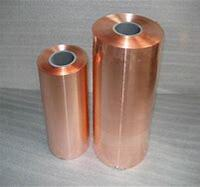1. Introduction
Copper rods are essential components in electrical grounding, welding, and industrial applications due to their excellent conductivity, corrosion resistance, and durability. Whether you’re installing an earthing system, performing copper-to-copper welding, or sourcing materials for busbars, understanding the right type of copper rod—and how to use it—is critical. This guide provides a step-by-step approach to selecting, installing, and maintaining copper rods for optimal performance.

2. Understanding Types of Copper Rods
Not all copper rods serve the same purpose. Identifying your application is the first step toward choosing the correct variant.
2.1. Copper Earth Rods and Grounding Solutions
For electrical safety and lightning protection, copper earth rods (also called ground rod copper or earthing rod copper) are widely used. Options include solid copper rods, copper bonded earthing rods, and copper clad steel ground rods. Solid copper offers superior conductivity but at a higher copper rod price. Copper bonded steel combines a steel core with a thick copper layer, offering strength and cost-efficiency. Similarly, copper clad earth rods provide good corrosion resistance at a lower cost than pure copper.
- Choose copper bonded ground rod for high-corrosion environments where mechanical strength matters.
- Verify local electrical codes—some regions require minimum copper thickness (e.g., 0.25mm for copper bonded).
- Compare earthing rod price across suppliers; copper bonded options often offer the best value.
2.2. Copper Rods for Welding and Brazing

When joining copper components, specialized filler materials are needed. Copper brazing rod and copper welding rod are designed for specific processes. For copper-to-copper joints, copper to copper brazing rods or copper to copper welding rod types ensure strong, conductive bonds. Note that true ‘welding’ of copper often requires preheating due to its high thermal conductivity; brazing is more common in field applications.
- Use copper rod for welding only with compatible flux and proper torch control.
- Ensure the welding rod copper matches the base metal alloy to avoid weak joints.
- Store copper brazing rods in dry conditions to prevent oxidation.
2.3. Copper Round Bars and Flat Strips
Beyond rods, related products like copper round bar (or round bar copper), flat copper strip, and flexible copper bus bar serve roles in electrical distribution. Copper strip for earthing, beryllium copper strip, and nickel plated copper strip are used in switchgear, transformers, and grounding grids. Thin copper strips (e.g., 1mm copper strip) or copper strip roll formats suit tight-space installations.
- Copper bars for sale include solid, flexible, and alloyed variants like copper beryllium strip for spring applications.
- For scrap or recycling, stripping copper wire efficiently avoids burning—a hazardous and illegal practice in many areas.
3. Step-by-Step: Installing a Copper Earth Rod

Proper installation ensures low earth resistance and long-term reliability.
3.1. Site Preparation
Select a moist, low-resistivity soil area if possible. Avoid rocky or frozen ground. Check for underground utilities before driving the rod.
3.2. Driving the Rod
Use a hammer drill or manual driver to insert the copper earth rod vertically. For deep installations (>3m), use couplers to join multiple copper bonded steel rods. Never bend or cut the rod unless absolutely necessary—it compromises integrity.
3.3. Connection and Testing
Attach a copper strip for earthing (e.g., 25x3mm) using exothermic welding or listed clamps. Test earth resistance with a ground resistance tester; values should typically be under 5 ohms for sensitive installations.
4. Common Problems and Solutions
Even with quality materials, issues can arise.
4.1. Corrosion at Joints
Galvanic corrosion may occur if dissimilar metals contact. Always use compatible connectors (e.g., copper-to-copper) or dielectric unions.
4.2. High Earth Resistance
Causes include dry soil, short rod length, or poor connections. Solutions: add more rods in parallel, use bentonite backfill, or increase rod depth.
4.3. Wire Stripping Challenges
When preparing copper strip wire or reclaiming material, avoid burning copper wire for scrap. Instead, use mechanical strippers. The best way to strip copper wire depends on gauge—rotary strippers work for bulk, while manual tools suit precision jobs. Stripping wire for recycling preserves value and complies with environmental regulations.
5. Pricing and Sourcing Tips
Copper rod price fluctuates with market rates (e.g., 1oz copper price). Solid copper commands a premium over copper bonded or copper clad steel earth rod options. For flat products, copper strip price varies by thickness and alloy—check local suppliers for ‘copper strip near me’ availability. Rolls of copper strip or custom-cut copper metal strips may offer volume savings.
6. Conclusion
Selecting and using the right copper rod—whether for earthing, welding, or electrical conduction—requires matching material properties to your specific application. Prioritize certified products like copper bonded earthing rod or copper to copper welding rod, follow installation best practices, and avoid shortcuts like burning insulation. With proper handling, copper rods deliver decades of reliable service in even the most demanding environments.
Our Website founded on October 17, 2012, is a high-tech enterprise committed to the research and development, production, processing, sales and technical services of ceramic relative materials such as How. Our products includes but not limited to Boron Carbide Ceramic Products, Boron Nitride Ceramic Products, Silicon Carbide Ceramic Products, Silicon Nitride Ceramic Products, Zirconium Dioxide Ceramic Products, etc. If you are interested, please feel free to contact us.

